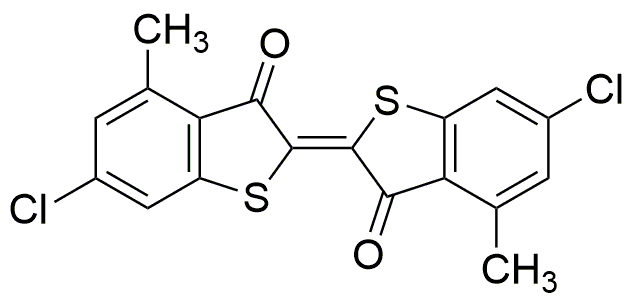Oralith brilliant pink R is widely utilized in research focused on:
- Dyes and Pigments: This chemical is commonly used in the textile industry to produce vibrant pink dyes for fabrics, ensuring colorfastness and durability.
- Cosmetics: It serves as a colorant in cosmetic products, providing a bright and appealing hue for items like lipsticks and blushes, while meeting safety regulations.
- Biological Staining: In laboratory settings, it is employed as a staining agent for biological samples, enhancing visibility under a microscope, which is crucial for research in cellular biology.
- Food Industry: The compound can be used as a food coloring agent, offering an attractive color to various food products, while adhering to food safety standards.
- Art and Craft Supplies: It is also found in art materials, such as paints and markers, allowing artists to create vivid artworks with a reliable and consistent color.
General Information
Properties
Safety and Regulations
Applications
Oralith brilliant pink R is widely utilized in research focused on:
- Dyes and Pigments: This chemical is commonly used in the textile industry to produce vibrant pink dyes for fabrics, ensuring colorfastness and durability.
- Cosmetics: It serves as a colorant in cosmetic products, providing a bright and appealing hue for items like lipsticks and blushes, while meeting safety regulations.
- Biological Staining: In laboratory settings, it is employed as a staining agent for biological samples, enhancing visibility under a microscope, which is crucial for research in cellular biology.
- Food Industry: The compound can be used as a food coloring agent, offering an attractive color to various food products, while adhering to food safety standards.
- Art and Craft Supplies: It is also found in art materials, such as paints and markers, allowing artists to create vivid artworks with a reliable and consistent color.
Documents
Safety Data Sheets (SDS)
The SDS provides comprehensive safety information on handling, storage, and disposal of the product.
Product Specification (PS)
The PS provides a comprehensive breakdown of the product’s properties, including chemical composition, physical state, purity, and storage requirements. It also details acceptable quality ranges and the product's intended applications.
Certificates of Analysis (COA)
Search for Certificates of Analysis (COA) by entering the products Lot Number. Lot and Batch Numbers can be found on a product’s label following the words ‘Lot’ or ‘Batch’.
*Catalog Number
*Lot Number
Certificates Of Origin (COO)
This COO confirms the country where the product was manufactured, and also details the materials and components used in it and whether it is derived from natural, synthetic, or other specific sources. This certificate may be required for customs, trade, and regulatory compliance.
*Catalog Number
*Lot Number
Safety Data Sheets (SDS)
The SDS provides comprehensive safety information on handling, storage, and disposal of the product.
DownloadProduct Specification (PS)
The PS provides a comprehensive breakdown of the product’s properties, including chemical composition, physical state, purity, and storage requirements. It also details acceptable quality ranges and the product's intended applications.
DownloadCertificates of Analysis (COA)
Search for Certificates of Analysis (COA) by entering the products Lot Number. Lot and Batch Numbers can be found on a product’s label following the words ‘Lot’ or ‘Batch’.
*Catalog Number
*Lot Number
Certificates Of Origin (COO)
This COO confirms the country where the product was manufactured, and also details the materials and components used in it and whether it is derived from natural, synthetic, or other specific sources. This certificate may be required for customs, trade, and regulatory compliance.


